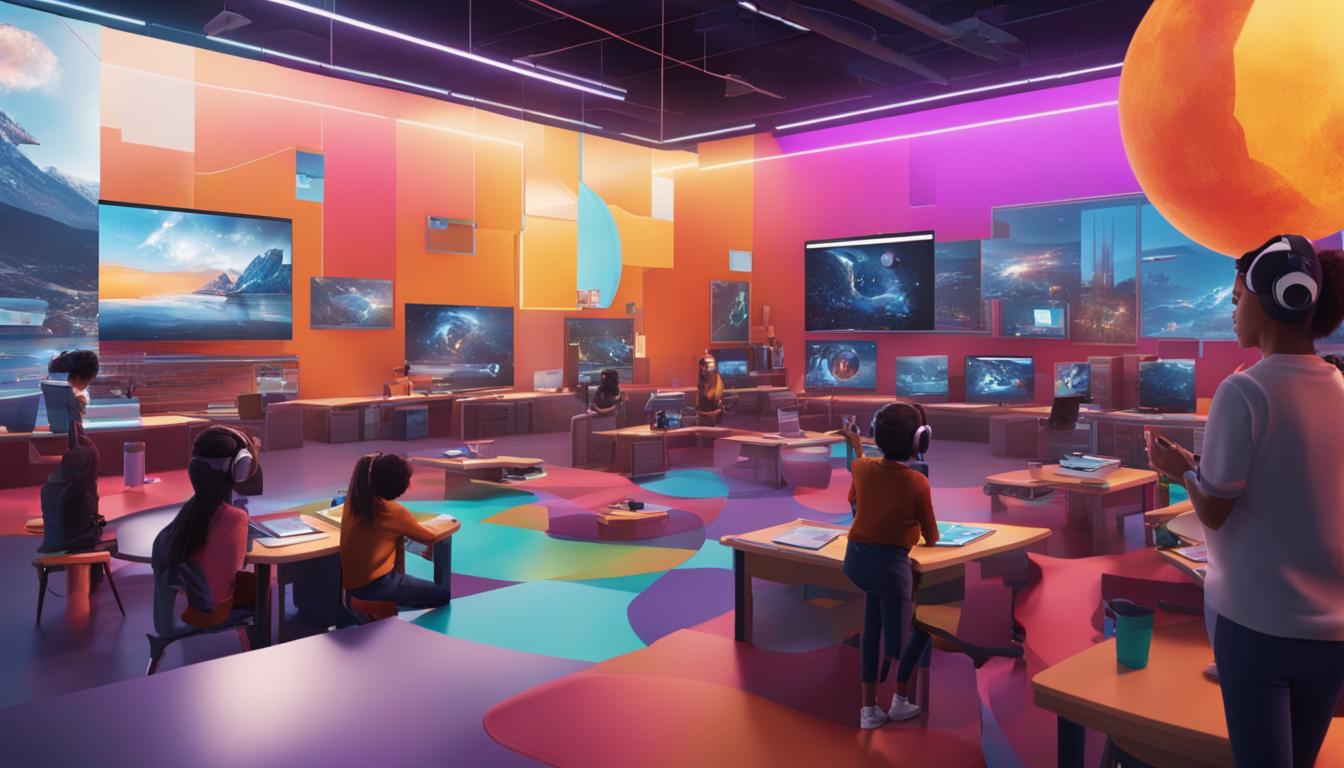Web 3.0, the next generation of the internet, is bringing transformative changes to the education industry. With its decentralized, user-centric approach, Web 3.0 is revolutionizing how students learn and educators teach. One of the key ways in which Web 3.0 is transforming education is through personalized learning experiences. By harnessing advanced technologies like artificial intelligence and blockchain, Web 3.0 is enabling adaptive learning systems and personalized content delivery, catering to the unique needs and preferences of each student. This shift towards personalized learning experiences has the potential to greatly enhance student engagement and outcomes in the education industry.
Key Takeaways:
- Web 3.0 is revolutionizing education through personalized learning experiences.
- Advanced technologies like artificial intelligence and blockchain are driving the transformation.
- Personalized learning enhances student engagement and outcomes.
- Web 3.0 enables adaptive learning systems tailored to each student’s needs.
- The education industry stands to benefit greatly from embracing Web 3.0 innovations.
The Role of Education Technology in Web 3.0
Educational technology is playing a vital role in the implementation of Web 3.0 within the education industry. Online learning platforms are harnessing the power of Web 3.0 to create immersive and interactive learning environments, revolutionizing the way students learn. Through the integration of virtual reality in education, students can explore virtual landscapes, participate in simulations, and engage in hands-on experiences to enhance their understanding of complex concepts.
Via virtual reality, students achieve greater engagement and active participation in the learning process, ultimately driving better learning outcomes. Education technology platforms are also leveraging Web 3.0 principles to provide seamless access to educational resources and personalized content, making learning more accessible and convenient for students worldwide.
Benefits of Education Technology in Web 3.0:
- Creation of immersive and interactive learning environments
- Enhanced student engagement and active participation
- Exploration of virtual landscapes and simulations
- Hands-on experiences to improve understanding of complex concepts
- Seamless access to educational resources and personalized content
- Increased accessibility and convenience for learners
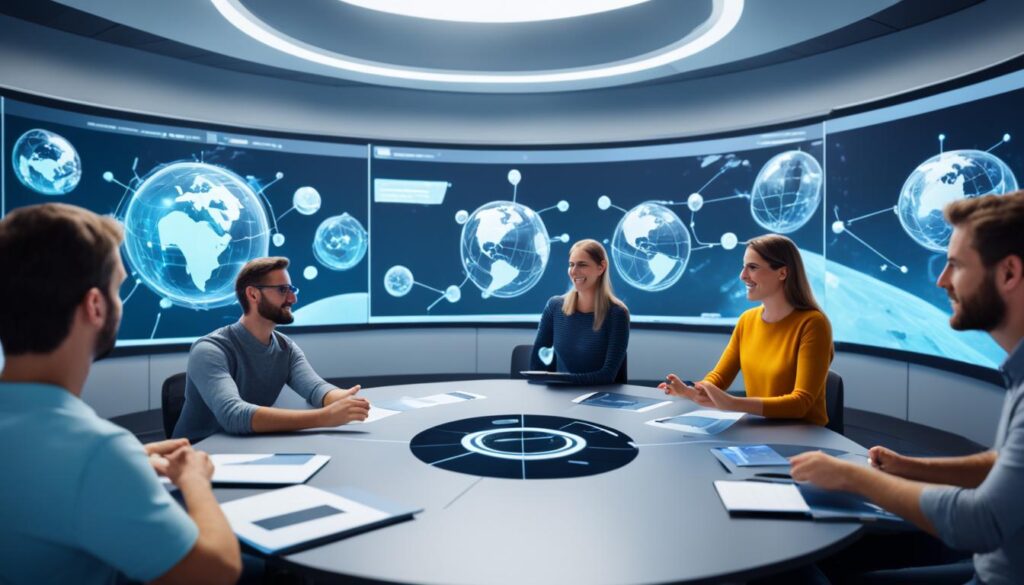
Education technology platforms are embracing Web 3.0 to revolutionize the teaching and learning experience, providing students with immersive and personalized learning opportunities.
Artificial Intelligence and Machine Learning in Web 3.0 Education
In the era of Web 3.0 education, artificial intelligence (AI) and machine learning are playing a fundamental role in transforming the learning experience. These cutting-edge technologies harness the power of data analysis to provide personalized recommendations and adaptive learning experiences for each student. With AI-powered algorithms at play, education becomes more effective, impactful, and tailored to individual needs.
AI algorithms analyze vast amounts of data to gain insights into students’ learning patterns, preferences, and strengths. This data-driven approach allows for targeted interventions and personalized feedback, ensuring students receive the support they need to succeed. Machine learning algorithms track student progress, identify areas of improvement, and adapt instructional strategies accordingly.
“Artificial intelligence and machine learning have revolutionized education, empowering educators to deliver individualized instruction and personalized pathways for students.”
Benefits of Artificial Intelligence and Machine Learning in Education
The integration of AI and machine learning in Web 3.0 education brings numerous benefits to both learners and educators:
- Personalization: AI enables customized learning experiences tailored to each student’s unique needs, preferences, and learning pace. This personalized approach enhances engagement, motivation, and knowledge retention.
- Adaptability: Machine learning algorithms continuously adapt to students’ progress and performance. They adjust instructional content, methods, and support to ensure optimal learning outcomes.
- Efficiency: AI-powered systems automate time-consuming tasks, such as grading and assessment, freeing up educators to focus on personalized instruction and mentorship.
- Insights: Data analysis through AI algorithms provides valuable insights into students’ individual learning journeys, allowing for informed decision-making and targeted interventions.
The combination of artificial intelligence and machine learning in Web 3.0 education holds immense potential for creating a dynamic and responsive learning environment. By harnessing the power of these technologies, educators can unlock new possibilities for enhancing student outcomes and fostering a lifelong love for learning.
Applications of AI and Machine Learning in Education
| Application | Description |
|---|---|
| Intelligent Tutoring Systems (ITS) | AI-powered systems that provide personalized instruction, feedback, and adaptive learning experiences. |
| Chatbots and Virtual Assistants | AI-powered conversational agents that support students and educators with instant responses, guidance, and information. |
| Automated Grading and Assessment | Machine learning algorithms that automate the grading and assessment process, saving time and providing objective evaluations. |
| Learning Analytics | Using data analysis to gain insights into student behavior, performance, and engagement, allowing for data-driven decision-making. |
| Adaptive Learning Platforms | Personalized learning platforms that adapt instructional content, pacing, and support according to individual student needs. |
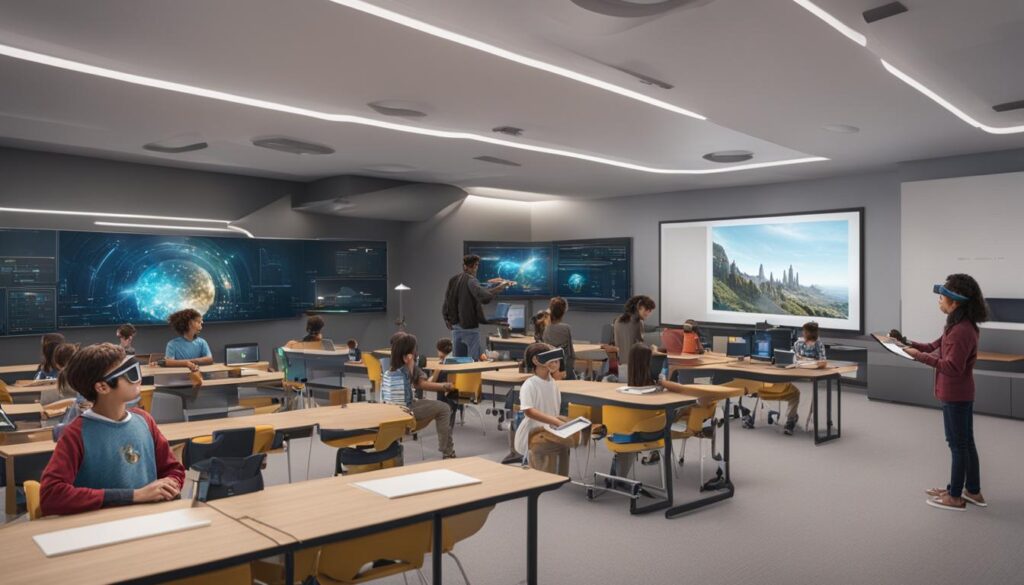
As technology continues to advance, the integration of artificial intelligence and machine learning in education will play an increasingly crucial role in shaping the future of learning. The capabilities of AI-powered algorithms and machine learning models present exciting opportunities for personalized, efficient, and effective education in the Web 3.0 era.
The Impact of Blockchain Technology in Education
Blockchain technology is revolutionizing the education industry in the era of Web 3.0. With its secure and transparent record-keeping capabilities, blockchain ensures the integrity of educational credentials and certificates. This technology enables the creation of decentralized platforms that facilitate verified peer-to-peer transactions, such as the transfer of digital credentials or the validation of educational achievements.
One of the key advantages of blockchain in education is the elimination of intermediaries and the establishment of trust between parties. By leveraging blockchain, educational institutions can securely store and share student records, creating a tamper-proof system. This not only simplifies administrative processes but also protects against fraud and misrepresentation of qualifications.
Moreover, blockchain technology opens up new possibilities for educational institutions to offer micro-credentials and digital badges. These credentials provide learners with a more flexible and versatile way to showcase their skills and accomplishments. By having verifiable digital certificates, individuals can demonstrate their expertise to potential employers or academic institutions, enhancing their career prospects and educational opportunities.
Blockchain’s impact goes beyond credentialing and extends to areas such as intellectual property rights and academic research. By using smart contracts on the blockchain, researchers can protect their intellectual property and ensure proper attribution of their work. This transparency fosters collaboration and trust among researchers while promoting responsible use and sharing of knowledge.
“Blockchain provides a secure and transparent foundation for the education industry, allowing for the seamless exchange of educational credentials and empowering learners to showcase their skills with confidence.”
As the adoption of blockchain technology in education continues to grow, it has the potential to reshape the way educational records are managed, recognized, and utilized. By leveraging the benefits of blockchain, the education industry is moving towards a more transparent, efficient, and learner-centric ecosystem.
Next, let’s explore the potential of Web 3.0 in enabling lifelong learning.
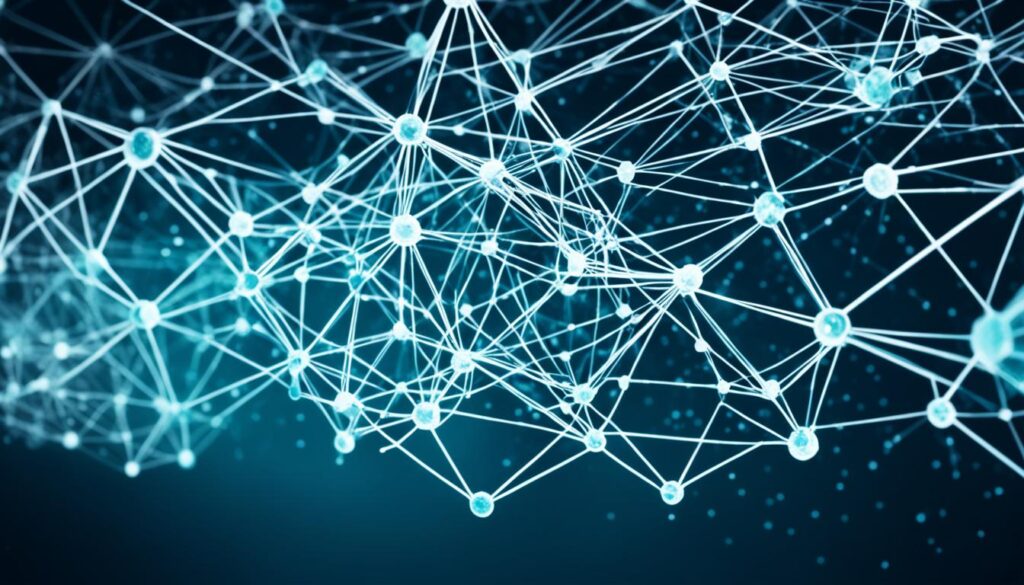
The Potential of Web 3.0 in Enabling Lifelong Learning
Web 3.0 has paved the way for a new era of education, one that extends beyond traditional classrooms and textbooks. It holds immense potential in enabling lifelong learning, allowing individuals to constantly engage with personalized content and experiences catered to their evolving needs and interests.
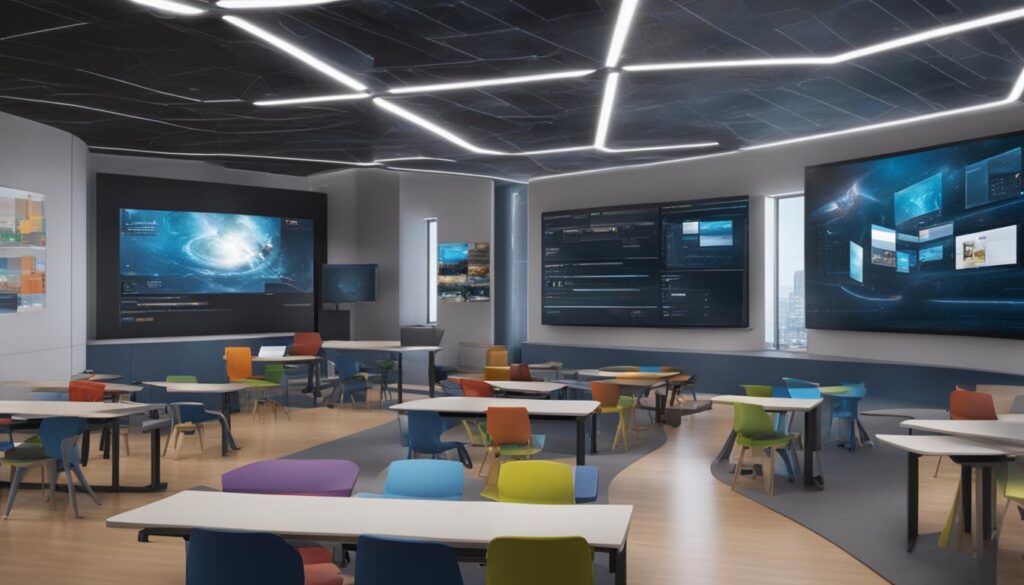
Through the integration of adaptive learning systems, Web 3.0 empowers learners to embark on a continuous learning journey. These systems leverage advanced technologies like artificial intelligence and machine learning to analyze learner data and provide tailored recommendations. By adapting to individual learning styles and preferences, adaptive learning systems create engaging and effective learning experiences.
Lifelong learning becomes even more accessible and flexible with Web 3.0’s ability to create digital learning ecosystems. These ecosystems bridge formal and informal learning settings, facilitating seamless transitions and a holistic approach to education. Students can seamlessly transition between different learning environments, tapping into a wealth of resources and opportunities throughout their lives.
Moreover, Web 3.0 enables learners to acquire new knowledge and skills through various channels and platforms. From online courses and virtual classrooms to interactive simulations and collaborative projects, individuals can customize their learning experiences according to their unique goals and aspirations.
Ultimately, Web 3.0 has the potential to revolutionize education by fostering a culture of lifelong learning. It empowers individuals to take ownership of their learning journey and unlock their full potential. As the world rapidly evolves, lifelong learning becomes more crucial than ever before, equipping individuals with the skills needed to adapt and thrive in a fast-paced and ever-changing landscape.
Conclusion
As Web 3.0 continues to reshape the digital landscape, the education industry is poised to experience a revolutionary transformation. The integration of Web 3.0 principles, such as artificial intelligence, blockchain technology, and personalized learning experiences, holds immense potential for innovation within education. By embracing these advancements, educators can unlock new possibilities to enhance student learning, foster creativity, and prepare learners for the challenges of the future.
Web 3.0 brings about a user-centric approach to education, enabling personalized learning experiences that cater to each student’s unique needs and preferences. With the help of advanced technologies like artificial intelligence, adaptive learning systems can analyze data and provide tailored recommendations, leading to improved engagement and outcomes. Furthermore, blockchain technology ensures the integrity of educational credentials and allows for the creation of decentralized platforms, opening up new avenues for micro-credentials and digital badges.
By adapting to the era of Web 3.0, the education industry can create truly innovative and learner-centered educational experiences. This includes leveraging virtual reality and immersive learning environments provided by education technology platforms, bridging the gap between formal and informal learning settings, and embracing lifelong learning as a continuous journey. Through the integration of Web 3.0, education becomes more engaging, inclusive, and effective, empowering individuals to thrive in an ever-evolving world.
FAQ
How is Web 3.0 transforming the education industry?
Web 3.0 is revolutionizing education by enabling personalized learning experiences through advanced technologies like artificial intelligence and blockchain. This shift towards personalized learning has the potential to greatly enhance student engagement and outcomes in the education industry.
What is the role of education technology in Web 3.0?
Education technology plays a crucial role in implementing Web 3.0 in the education industry. Online learning platforms leverage Web 3.0 principles to create immersive learning environments. Virtual reality, for example, revolutionizes the way students learn by providing interactive and engaging experiences.
How does artificial intelligence and machine learning impact Web 3.0 education?
Artificial intelligence and machine learning algorithms analyze data and provide personalized recommendations, allowing for adaptive learning experiences tailored to each student. These technologies can track student progress and provide targeted interventions and personalized feedback to enhance the effectiveness of education.
What is the impact of blockchain technology in education within the context of Web 3.0?
Blockchain technology offers secure and transparent record-keeping, ensuring the integrity of educational credentials. It enables decentralized platforms for verified peer-to-peer transactions, such as transferring digital credentials or validating educational achievements. Blockchain also allows for the creation of micro-credentials and digital badges to showcase skills and accomplishments.
How does Web 3.0 enable lifelong learning?
Web 3.0, with its adaptive learning systems, enables lifelong learning by providing continuous access to personalized content and experiences tailored to learners’ evolving needs and interests. It creates digital learning ecosystems that bridge formal and informal learning settings, promoting a holistic approach to education.
How does Web 3.0 innovate the education industry?
Web 3.0 brings innovation to the education industry by leveraging technologies like artificial intelligence, blockchain, and personalized learning experiences. By embracing these advancements, educators can enhance student learning, foster creativity, and prepare learners for the challenges of the future.

